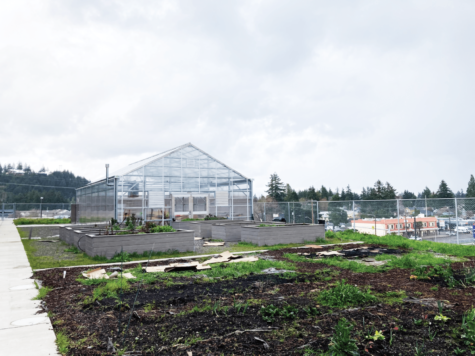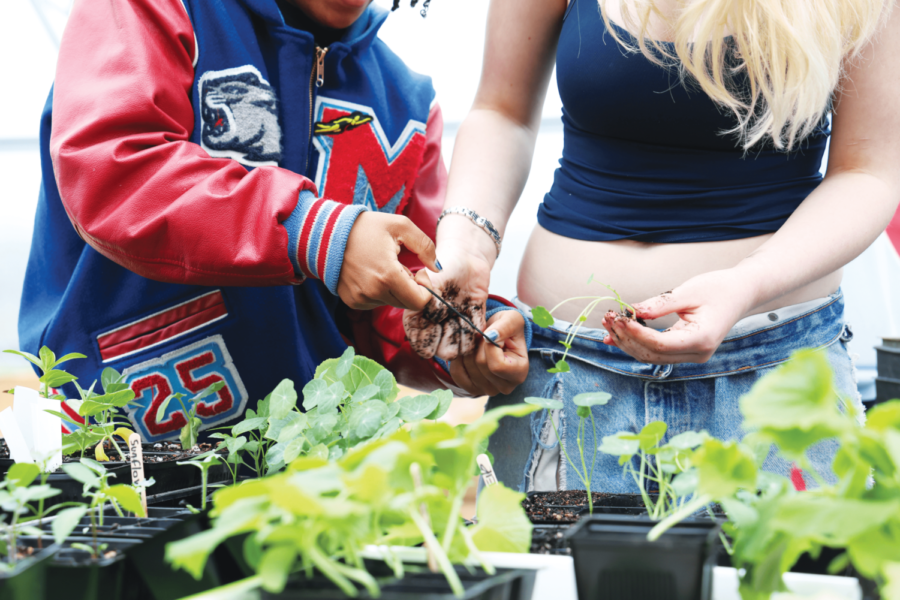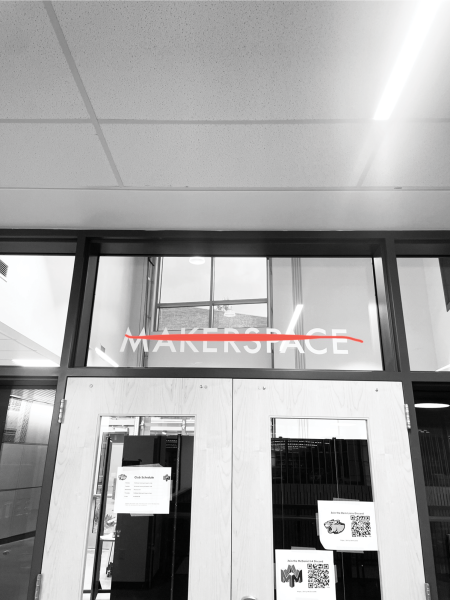CTE Agriculture program continues learning despite greenhouse delays
Students work together in the greenhouse. The road to using the building has been long.
The construction of McDaniel’s greenhouse began while the rest of the school was being rebuilt. However, its plans were not part of the school’s original ones, and because of this, the greenhouse was unable to be completely finished along with the rest of the school.
Now, with a new influx of money from the CTE program, private donors and the school district, the greenhouse is on its way to being fully completed.
Sarah Nealon, the sustainable agriculture teacher, expressed her disappointment that the greenhouse wasn’t able to be completed earlier.
“One thing that I find unfortunate is that I had seniors last year who were seeing this whole thing being built,” Nealon said. “I think it’s sad that they didn’t get to reap the benefits of it.”
This year, the inaccessibility to the greenhouse has been somewhat inconvenient to the agriculture program. Since the greenhouse is not properly set up to maintain a garden, it cannot be used to extend the growing season and the agriculture program’s crops are vulnerable to extreme weather. They also cannot germinate their seeds in the greenhouse.
For now, Nealon has the seeds on heating mats on her classroom countertop.
According to a senior sustainable agriculture student Jose Villalba, without the greenhouse, the class isn’t able to grow any warm-weather crops early because of the cold outdoor temperatures.
“Also during the snow season, because of all the humidity in there, we wouldn’t have been allowed to have some plants alive during that whole winter storm,” Villalba said.
In the absence of the greenhouse, the agriculture program has their garden. However, when the raised beds were filled in the fall, the construction workers used construction filler soil instead of the gardening soil that Nealon and the project director, Jenny Steiger, were promised.
“They just used a literal filler, like the contractors just used a construction site dirt. It was just not gardenable. It just wasn’t quality,” Nealon stated.

The agriculture program sells their products, and with the lack of access to a functioning greenhouse and the struggle to get their garden beds up and running, they aren’t able to profit as much as they could otherwise.
With the completion of the structure currently underway, it seems likely that the greenhouse will soon be fully functional and the agriculture program will be able to take full advantage of their resources.
The greenhouse was never meant to be finished on the same timeline as the school building, and is actually moving forward at the intended pace.
“There weren’t mistakes that caused that delay,” Principal Adam Skyles said. “When we went through the city planning process [for the school], the greenhouse wasn’t a part of that. The project was able to stay on track with funding, so it became an option that we were able to do.”
The greenhouse is projected to be completely finished by the end of the summer but will likely continue to be improved over time, Skyles stated.
“I don’t know that it will ever be 100% done. The program will shift and change, students will come in with ideas or projects, and we’ll make tweaks to it,” Skyles said. “The major expenditures are all going to wrapped up here this summer.”
Business Manager Trinh Ngo stated that the school is working on installing plumbing, electricity and water in the greenhouse.
“Hopefully [at the] end of this year, we’ll get it up and going for next year,” Ngo said.
During the wait, the agriculture program has continued to learn and tend their garden with the resources they have access to right now.
As Ngo put it, “We have an awesome teacher that makes it work for our students.”
Thisbe Delamarter (she/her) is a senior who loves reading, learning and soccer. She loves journalism because she enjoys investigating and sharing new perspectives.

Sebastian Gracie-Fultz is a senior, and she’s passionate about collecting vintage doo-dads and mental health awareness. People describe them as passive-aggressive, passionate and stubborn. They love being a journalist because it gives them the opportunity to speak with all types of people and helps her love of networking/knowing people.







